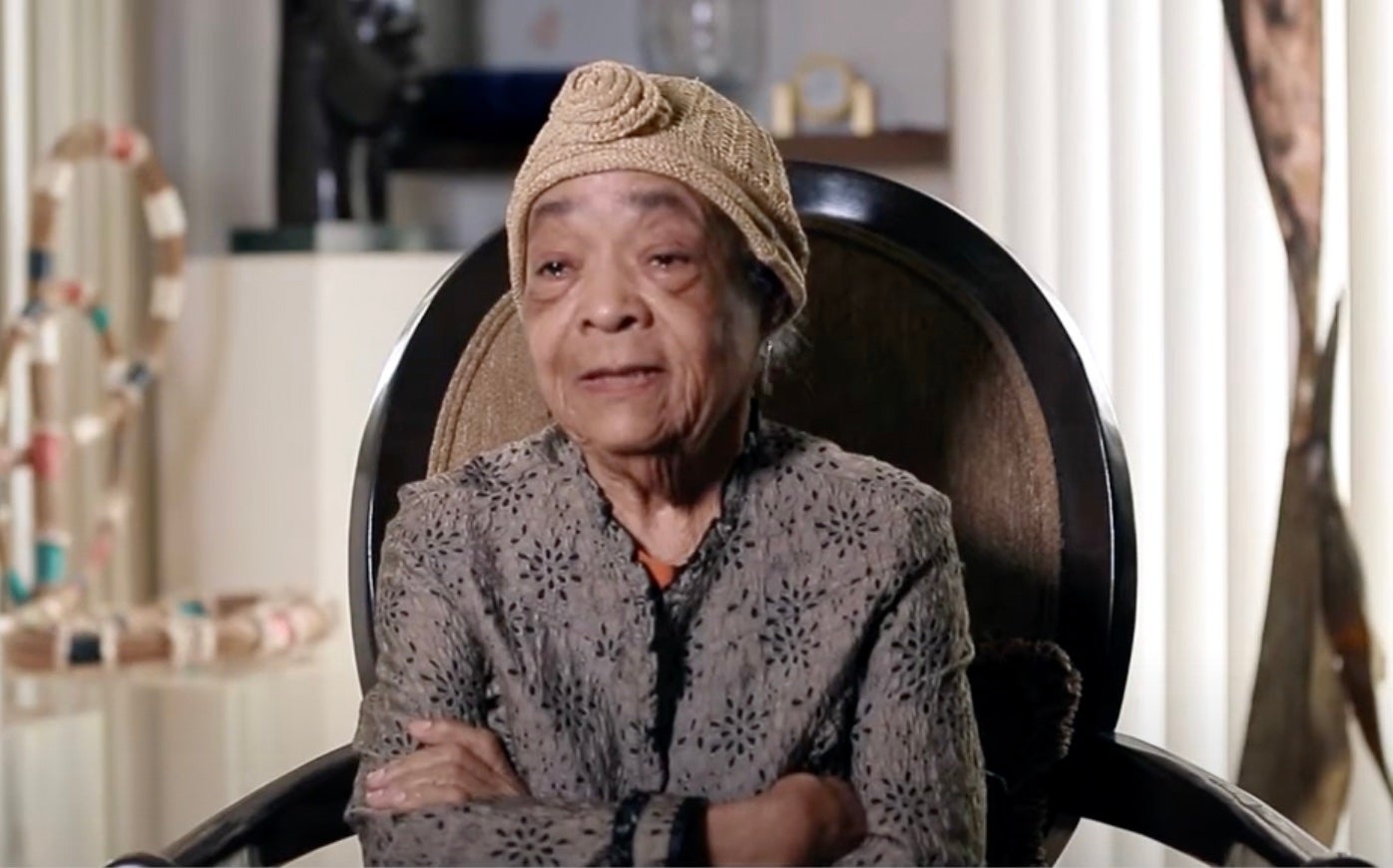
Renowned historian, curator, author, educator, and artist Samella Lewis, whose writing and activism helped shape Black art history, passed away on May 27. She was 99 years old.
According to the Los Angeles Times, Lewis died from kidney failure at a hospital in Torrance, California. Her death was confirmed by her younger son, Claude.
The daughter of a farmer and a seamstress, Samella Sanders was born on February 27, 1923 in New Orleans. She was first exposed to art in the city’s French Quarter, where she met an Italian portrait painter named Alfredo Gali who gave her free art lessons.
Lewis studied art at Dillard University. While there, she met Elizabeth Catlett, an esteemed sculptor who became her lifelong mentor and close friend. After two years at Dillard University, Lewis went to the Hampton Institute in Virginia (now Hampton University), where she continued to study with Catlett and earned her undergraduate degree in 1945.
She went on to get a master’s degree in 1948 and a double doctorate in 1951, becoming the first Black woman to earn a PhD in fine art and art history at Ohio State University. Lewis taught at many universities throughout her career, including at the Florida Agricultural & Medical University in Tallahassee, a historically Black college where she organized the first-ever national conference for Black artists and was an active member of the NAACP.
Over the course of her career, she published several books on Black art and artists, including Black Artists on Art (1969) and Art: African American (1978), which are believed to be one of the first surveys of its kind, according to ARTnews. She also worked as a painter and printmaker, and was an art collector. Her artwork has been widely exhibited at galleries, universities, and museums, including the Museum of African American Art, which she founded in 1976.
Naima J. Keith, the vice president of education and public programs at the Los Angeles County Museum of Art, told the L.A. Times that Lewis “worked tirelessly as an artist, collector, historian, and curator, helping form a new area of study for a kind of art that mainstream institutions had chosen to ignore. Her work has changed African American art history forever.”







Lewis has been recognized by various institutions and received numerous accolades, including a Charles White Lifetime Award in 1993 and a UNICEF Award for the Visual Arts in 1995. Last year, she received the Distinguished Artist Award for Lifetime Achievement from the College Art Association.
“Black women are nurturers,” Lewis told ESSENCE in a 1996 interview. “We also have an obligation to see that valuing, and collecting our art is a significant aspect of nurturing. We must familiarize ourselves with our historical and contemporary art in order to understand and know ourselves.”
She is survived by her sons Claude and Alan Lewis; and three grandchildren: Unity Lewis, Gabriella Angela Lewis, and Gian Carlo Lewis.





